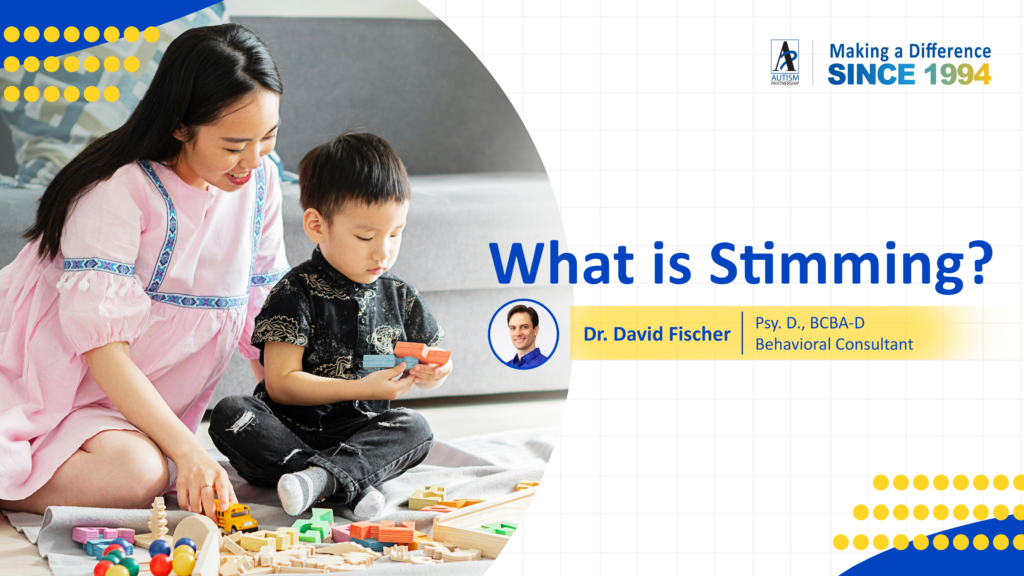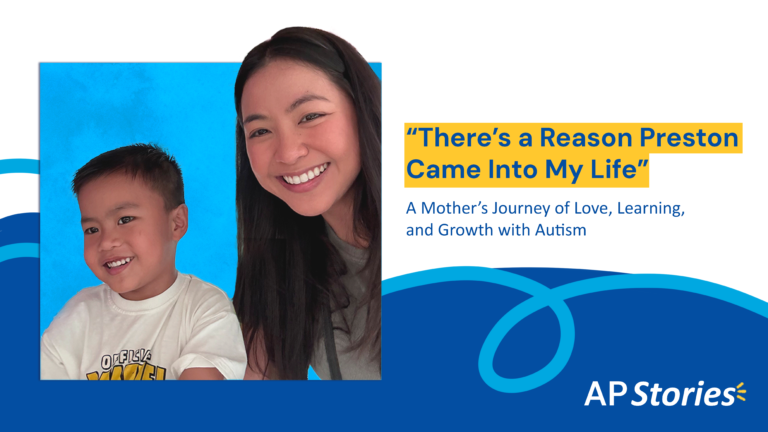
In the DSM-V, the diagnostic criteria for Autism Spectrum Disorder (ASD) describes four behavior symptoms. One of those symptoms is “Stereotyped or repetitive motor movements, use of objects, or speech (e.g., simple motor stereotypies, lining up toys or flipping objects, echolalia, idiosyncratic phrases).” Even though demonstrating these repetitive behaviors is not a requirement for diagnosis, nevertheless they have become seen as a hallmark of it, and they are often colloquially referred to as “stimming.” As awareness of ASD has increased, stimming has become part of the public consciousness and a frequent topic of discussion among those with ASD and related groups. In fact, these discussions often involve strong opinions regarding responses to stimming. Let me review a bit about the nature of these behaviors, when applying the label “stimming” makes sense, and approaches parents may consider in response to them.

The word “stimming,” as it is used in this case, is short for “self-stimulating.” The word “self-stimulating” is a layperson term for the more professional phrase “automatic reinforcement.” The journey in phrasing is important to understand because it provides critical background knowledge to the discussion at hand. The repetitive behaviors described in the DSM-V often serve the function of automatic reinforcement, meaning that the behaviors occur because they directly make the individual feel good or less bad. However, these behaviors do not always serve that function or that function alone. Despite that inconsistency, “stimming” has become shorthand for these repetitive behaviors. For the remainder of this article, “stimming” and “stims” (the noun form of stimming) will refer to repetitive behaviors that occur for automatic reinforcement.

Prior to addressing a stim, it must be determined whether the behavior warrants clinical attention. Not all stims are problematic. Keep in mind that typical people engage in stims too. Twirling hair, cracking knuckles, tapping a pen on a table, etc. are all repetitive behaviors that typical people engage in but rarely interfere with one’s quality of life. Similarly, people with ASD may engage in stims that are not detrimental to them in any way. For example, pacing back and forth in their room at the end of the day, mumbling the script to a video prior while taking a bath, and making faces in the mirror while getting ready for school are unlikely to cause a negative impact. On the other hand, there are scenarios where stims may be occurring that do have effects that are somehow harmful. If it is determined that a stim is sufficiently harmful to justify intervention, there are steps that can be taken to help.

To begin the process of addressing a behavior, the fact remains that to provide optimal care for an individual with ASD, it is critical to understand the function(s) of their behavior. To identify the function of repetitive behaviors that may be stims, a parent can observe the behavior’s antecedents and consequences. Therefore, parents can observe their child’s behavior to get a sense of when it is occurring and the reactions to it. There is no formula for identifying a behavior’s function; however, if a behavior occurs across many contexts (especially when the person is alone) or if there is not much reaction to the behavior, then the possibility that the behavior is a stim increases.
If the behavior is a stim that warrants intervention, there are several steps to take. First, functional alternative behaviors can be taught to replace the stim. A common example is if a child stims when he/she is bored, that child can be taught other fun activities to do instead of stimming. A second step is to praise or otherwise reinforce the absence of the stim. Lastly, gentle and casual redirection can be considered; however, if the learner resists, this strategy may not be ideal.
Bear in mind, eliminating stims altogether is unlikely and unnecessary. In fact, inhibiting stims can be exhausting for some individuals with ASD to the point that doing so is not worth it. Consequently, care givers should be mindful when selecting stims to address.
At Autism Partnership (AP), we adopt our very own treatment method called, Autism Partnership Method (APM™). AP Method™ is a progressive model of ABA and is a high quality treatment approach for ASD.

The first thing you’ll notice about Preston is his bright smile and the love he shows to the people around him. But behind that smile is a story of a mother’s strength, filled with ups and downs, courage, and hope. It’s a journey of turning fear into love—and finding strength in the unexpected. A Life-Changing […]

It’s natural for parents to compare their child to others, including among those raising a child with ASD. Many parents ask why their child isn’t making the same progress as other children, despite following the same intervention program. While we fully understand these concerns, we strongly recommend that parents avoid comparisons. Each child with autism […]

Choi, a 6-year-old boy, has been attending mainstream school just like his peers. However, he exhibited challenging behaviors in the classroom, such as throwing objects and hurting others. At school, he was often separated from his classmates and unable to participate in their regular activities. His school teachers recommended that Choi’s father seek support from […]
Please share to let more people learn about ASD and ABA therapy:
AP holds the belief that with quality ABA treatment using the Autism Partnership Method (APM), individuals with autism can reach their fullest potential and achieve the greatest degree of independence and highest quality of life possible.
![]()
All information received will always remain confidential. We will contact you as soon as we review your message. Thanks